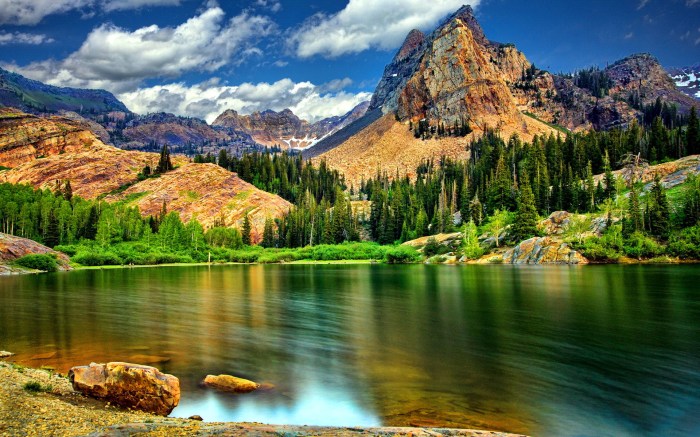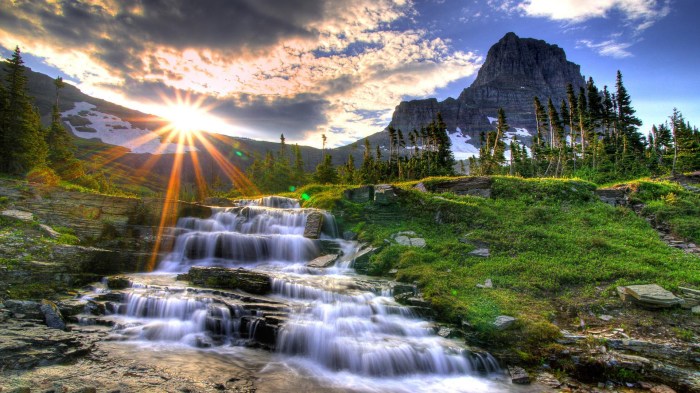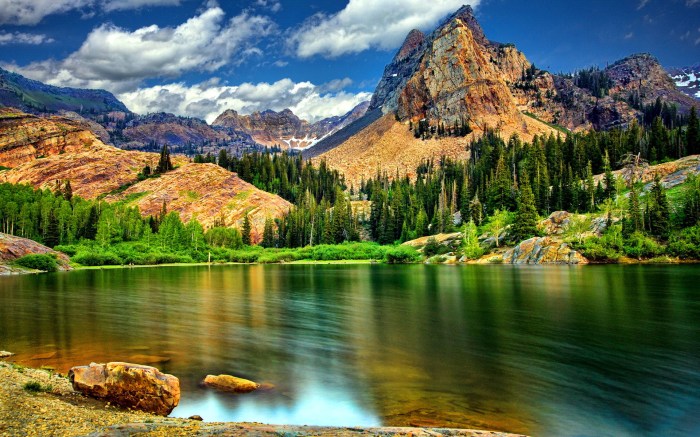Best hikes in Crete: Unveiling the island’s breathtaking trails, from coastal strolls to challenging mountain ascents. This guide explores diverse hiking experiences, catering to various skill levels and interests, ensuring you find the perfect trek for your Crete adventure.
Cretan hiking offers a unique blend of stunning landscapes, rich history, and vibrant culture. Whether you’re a seasoned hiker or a beginner, this guide provides detailed information on various trails, considering difficulty, location, and duration. Explore the island’s beauty at your own pace, discovering hidden gems and breathtaking views along the way.
Hiking in Crete: A Diverse and Rewarding Experience
Crete, the largest Greek island, boasts a stunning array of landscapes, perfect for hiking enthusiasts. From the dramatic peaks of the White Mountains to the picturesque coastal paths, the island offers a diverse range of trails, catering to hikers of all levels. Hiking in Crete is more than just a physical activity; it’s an immersion into the island’s rich history and vibrant culture.
The trails often lead past ancient ruins, traditional villages, and breathtaking vistas, providing a unique insight into the island’s soul.The hiking experience in Crete is influenced by the island’s Mediterranean climate. Warm, sunny days are common, particularly during the spring and summer months, but the weather can change quickly. Be prepared for sudden showers, especially in the mountains, and always check the forecast before heading out.
The best times to hike are during the shoulder seasons of spring and autumn, when the weather is pleasant and the crowds are smaller.
Hiking Trail Categories
Crete’s hiking trails are categorized to match different preferences and skill levels. These diverse paths allow for various experiences, from leisurely strolls along the coast to challenging ascents into the mountainous heart of the island. A basic understanding of the trail types will help you choose the right hike for your needs.
| Trail Category | Description | Difficulty | Length |
|---|---|---|---|
| Coastal | Following the coastline, often featuring stunning views of the sea and picturesque villages. | Easy to Moderate | Varies, from short walks to longer excursions. |
| Mountain | Ascending into the mountainous regions, often offering panoramic vistas and encounters with local flora and fauna. | Moderate to Difficult | Varies, from moderate climbs to multi-day treks. |
| Scenic | Focused on scenic viewpoints and cultural sites, often including historical landmarks and traditional villages. | Easy to Moderate | Varies, from short strolls to moderate-length hikes. |
Weather Patterns and Seasonal Variations
Crete’s weather is generally pleasant for hiking, with warm, sunny days and mild nights. However, the weather can fluctuate significantly, particularly in mountainous areas. Summer months can be very hot, and hikers should be prepared for high temperatures and potential heatstroke. Spring and autumn offer ideal conditions, with pleasant temperatures and reduced rainfall. Winter months can experience rainfall and cooler temperatures, though some trails remain accessible.
The best time for hiking is usually during the spring and fall, when the weather is more temperate.
Historical and Cultural Significance of Hiking Trails, Best hikes in crete
Many hiking trails in Crete pass through areas of significant historical and cultural importance. Ancient ruins, traditional villages, and historical sites are often integrated into the paths. These trails offer a unique opportunity to immerse oneself in the island’s rich heritage and discover the stories behind its past. Hiking often allows for an encounter with local traditions and ways of life, as well as glimpses into the island’s agricultural practices and historical architecture.
For example, hiking trails in the Lasithi Plateau often pass by Minoan settlements and ancient monasteries, providing insight into the island’s rich past.
Best Hikes Based on Difficulty: Best Hikes In Crete
Crete’s diverse landscapes offer hiking trails for every fitness level. From gentle coastal strolls to challenging mountain ascents, there’s a perfect trek awaiting each adventurer. This section details hikes categorized by difficulty, providing insights into the accessibility and rewards each offers.This exploration will guide you through the varying terrains and highlight the unique experiences associated with each hike, allowing you to choose the perfect adventure based on your abilities and aspirations.
Beginner Hikes
Beginner hikes in Crete provide an excellent introduction to the island’s natural beauty, with trails that are easily accessible and suitable for all levels of fitness. These routes often follow well-maintained paths and offer stunning vistas, allowing you to immerse yourself in the breathtaking scenery without excessive exertion. A significant benefit of these trails is their suitability for families and individuals who prefer a more relaxed pace.
- The Samaria Gorge Trail (section): While the full Samaria Gorge is more advanced, a portion of it can be a wonderful beginner hike. This section typically involves a gradual descent through the gorge, allowing you to appreciate the stunning scenery and learn about the local flora and fauna. The path is well-marked and generally easy to follow.
- Various coastal paths around Chania and Rethymno: These paths often offer beautiful views of the coastline, charming villages, and picturesque bays. These are perfect for a leisurely stroll, offering opportunities to admire the Mediterranean landscape and enjoy the fresh sea air.
Moderately Challenging Hikes
Moderately challenging hikes in Crete provide a rewarding balance of physical exertion and breathtaking scenery. These routes often involve some elevation gain, winding paths, and potentially some uneven terrain. The effort is often balanced by the spectacular views and immersive experiences they provide.
- Mount Ida Trails: Several trails ascend Mount Ida, Crete’s highest peak. These offer varying degrees of difficulty, allowing you to choose a trail that matches your fitness level. The rewarding aspect is the panoramic views from the summit, showcasing the vast landscapes of Crete.
- Hiking trails around Lasithi Plateau: These trails offer a blend of rolling hills, picturesque villages, and stunning views of the plateau’s unique landscape. The moderately challenging nature of these routes provides a fantastic opportunity to appreciate the beauty of Crete’s inland regions.
Challenging Hikes
Challenging hikes in Crete cater to experienced hikers with exceptional fitness levels. These routes typically involve significant elevation gain, steep ascents, and potentially exposed sections. While demanding, these hikes offer extraordinary rewards, including breathtaking summit views and the sense of accomplishment from conquering the terrain.
- Summit of Mount Ida: The full ascent to the summit of Mount Ida is a challenging undertaking. The steep inclines, rocky terrain, and potential exposure require a high level of physical fitness and preparation. The exceptional reward is the awe-inspiring panoramic view from the summit.
- High-altitude trails in the White Mountains: These trails are renowned for their challenging climbs and breathtaking vistas. The elevation gain, steep inclines, and often rocky terrain necessitate considerable physical preparedness. The panoramic views and the sense of accomplishment from reaching the summit are unparalleled.
Comparison Table
| Hike Name | Difficulty | Estimated Time | Key Features |
|---|---|---|---|
| Hike 1 | Easy | 2-3 hours | Coastal views, well-maintained paths |
| Hike 2 | Moderate | 4-5 hours | Mountain vistas, picturesque villages |
| Hike 3 | Challenging | 6+ hours | Summit views, challenging terrain |
Best Hikes Based on Location and Region

Crete’s diverse landscapes offer hiking experiences tailored to every preference. From dramatic coastal paths to challenging mountain ascents, the island’s varied terrain provides a rewarding journey for hikers of all levels. This section delves into specific regional hikes, highlighting their unique characteristics and providing a glimpse into the island’s natural beauty.Exploring Crete’s different regions unveils a tapestry of hiking opportunities.
Each area boasts distinct scenery, from the dramatic cliffs of the north to the lush mountains of the south. This section examines hikes in specific locations, considering proximity to towns and key attractions, offering a more nuanced understanding of the island’s hiking potential.
Hikes in Northern Crete
Northern Crete, with its dramatic coastline and charming towns like Chania, presents a variety of hiking trails. The region is known for its stunning coastal views, offering opportunities for both breathtaking panoramas and challenging climbs. Several trails wind along the rugged cliffs, rewarding hikers with panoramic vistas of the Aegean Sea.
- The Samaria Gorge, while technically spanning a portion of southern Crete, has a significant northern entrance point. This iconic gorge, one of Europe’s longest gorges, offers a truly unforgettable experience. The well-marked trail descends through a dramatic canyon, surrounded by towering cliffs and lush vegetation. The trailhead is relatively accessible from several nearby towns.
- The trails around the Akrotiri peninsula offer a unique blend of coastal and mountain hikes. The terrain varies from gentle paths along the coastline to steep climbs leading to panoramic viewpoints. These trails are a great option for hikers who enjoy the combination of scenic coastal walks and challenging ascents.
Hikes in Southern Crete
Southern Crete is renowned for its rugged mountains and dramatic landscapes. Hikes in this region often involve challenging ascents, but the rewarding summits provide exceptional views of the surrounding countryside and the Mediterranean Sea.
- The White Mountains (Lefka Ori) in the south offer numerous trails for hikers of all abilities. From relatively easy walks to strenuous climbs, the region provides a wide range of options. The challenging ascents are often rewarded with stunning vistas of the surrounding valleys and the glistening coastline.
- The area around Rethymno boasts a number of trails that combine coastal views with the charm of the local villages. These hikes often lead to traditional Cretan villages, allowing hikers to experience local culture alongside the beauty of the natural surroundings.
Hikes in Eastern Crete
Eastern Crete, situated near Heraklion, offers a unique blend of historical sites and natural beauty. Many hikes in this region combine historical exploration with scenic views.
- Trails near the Dikteon Cave, a significant historical site, provide a blend of cultural immersion and breathtaking scenery. The hikes often weave through olive groves and vineyards, offering glimpses into the agricultural landscape of Crete.
- The trails around the Lasithi Plateau offer opportunities to explore the island’s rich agricultural history. These trails often provide views of traditional villages and the extensive plains of the plateau.
Comparison Table of Hikes in Crete
| Hike Name | Region | Proximity to Towns | Key Attractions |
|---|---|---|---|
| Hike 1 (Samaria Gorge section) | Northern Crete | Close to Chania | Coastal views, challenging descent through a gorge |
| Hike 2 (White Mountains) | Southern Crete | Near Rethymno | Mountain scenery, rewarding summits, varied terrain |
| Hike 3 (Dikteon Cave) | Eastern Crete | Near Heraklion | Historical sites, scenic views of the surrounding countryside |
Best Hikes Based on Duration and Time Commitment
Planning a hike in Crete involves considering the available time. Whether you crave a quick escape, a full day of exploration, or a multi-day adventure, Crete offers diverse trails to suit your preferences. This section focuses on selecting the perfect hike based on its duration and the time commitment it requires.
Short Hikes for a Quick Escape
Short hikes provide a perfect opportunity to experience the beauty of Crete without a significant time investment. These trails are ideal for a quick break from daily life, a chance to enjoy stunning scenery, and a great way to discover hidden gems. They often involve moderate elevation gain, but the rewarding views and relatively short duration make them accessible to a wide range of hikers.
Excellent options for a quick escape include trails near villages like the ones around Chania or Rethymno, or small paths around gorges.
Day Hikes for Full-Day Exploration
Day hikes are perfect for a complete immersion in the Cretan landscape. These trails offer the chance to explore significant distances, encounter various ecosystems, and enjoy breathtaking views. They often involve more elevation gain than short hikes, necessitating a good level of fitness. Choosing a day hike involves careful consideration of the trail’s difficulty and the distance to ensure a fulfilling experience without overexerting yourself.
The Samaria Gorge is a renowned example, offering a full day of hiking and historical interest.
Multi-Day Hikes for an Adventurous Experience
Multi-day hikes are the ultimate way to immerse yourself in the Cretan wilderness. These adventures demand a greater level of preparation, including carrying essential gear, securing permits (if required), and being self-sufficient for multiple days. They often involve camping or staying in designated huts, fostering a deeper connection with nature and a unique experience. The White Mountains, with their challenging terrain and diverse ecosystems, are perfect for multi-day treks.
Comparing Hike Durations
| Hike Duration | Description | Suitable Activities | Planning Requirements |
|---|---|---|---|
| Short Hike | Quick escape, exploring local areas | Relaxation, photography, enjoying local villages | Minimal planning; check weather conditions |
| Day Hike | Full-day exploration | Hiking, picnics, exploring scenic viewpoints | Moderate planning; check trail conditions, pack appropriate gear |
| Multi-day Hike | Extensive exploration | Camping, backpacking, exploring remote areas | Extensive planning; obtain necessary permits, pack sufficient supplies, check weather forecasts |
Essential Hiking Gear and Safety Tips

Embarking on a Cretan hike requires careful planning and preparation, not just for a rewarding experience but also for your safety. Understanding the essentials, from the right gear to crucial safety precautions, will significantly enhance your journey and minimize potential risks. This section will equip you with the knowledge needed for a safe and enjoyable hike.
Essential Hiking Equipment
Proper gear is crucial for a comfortable and safe hiking experience. A well-stocked backpack is the cornerstone of a successful trip. Include items like a lightweight, waterproof backpack, appropriate layers of clothing, a sturdy pair of hiking boots, a first-aid kit, and a map and compass or GPS device. Consider adding a headlamp or flashlight for navigating in low-light conditions.
Remember, the right equipment is tailored to the specific hike, its duration, and the expected weather conditions.
Choosing Appropriate Footwear and Clothing
Selecting the correct footwear and clothing is paramount to your comfort and safety. Hiking boots with good ankle support are essential for uneven terrain and stability. Moisture-wicking fabrics and layers are vital for regulating body temperature and keeping you dry, even in unpredictable weather. Consider waterproof outerwear to protect yourself from rain or sudden changes in weather.
Don’t forget appropriate socks to prevent blisters and keep your feet dry.
Safety Precautions and Emergency Procedures
Knowing how to stay safe and what to do in an emergency is crucial. Familiarize yourself with potential hazards like steep inclines, uneven surfaces, and wildlife encounters. Ensure you are aware of local emergency contacts and have a plan in place for contacting them in case of an emergency. It’s advisable to inform someone of your hiking plans, including the route, estimated return time, and any potential risks.
Carrying a fully charged mobile phone, with a plan for charging or a power bank, can also be a life-saver.
Safety Tips for Hikers
- Check the weather forecast before heading out. Sudden changes in weather can significantly impact your hike, so staying informed is crucial. Be prepared for variations in temperature and precipitation.
- Inform someone of your hiking plans. Sharing your itinerary, including the route, estimated return time, and any potential risks, ensures someone knows where to find you if needed. Leave a copy of your plans with someone you trust.
- Carry enough water and snacks. Dehydration and hunger can significantly impair your judgment and physical abilities. Plan your food and water intake, and always carry more than you think you’ll need.
- Wear appropriate clothing and footwear. This includes layers for varying temperatures, sturdy hiking boots, and appropriate protective gear like rain jackets.
- Be aware of your surroundings and potential hazards. Pay attention to trail markers, steep drops, and potential wildlife encounters. Knowing the terrain and potential dangers will enhance your safety.
- Let someone know your estimated return time. This is crucial for tracking your progress and ensures someone knows when you are expected back. Set realistic expectations.
Final Summary
From invigorating coastal paths to challenging mountain ascents, Crete’s hiking trails offer something for everyone. This guide serves as your comprehensive companion, providing essential information to plan your unforgettable hiking experience. Pack your bags, embrace the adventure, and prepare to be captivated by the natural wonders of Crete!










